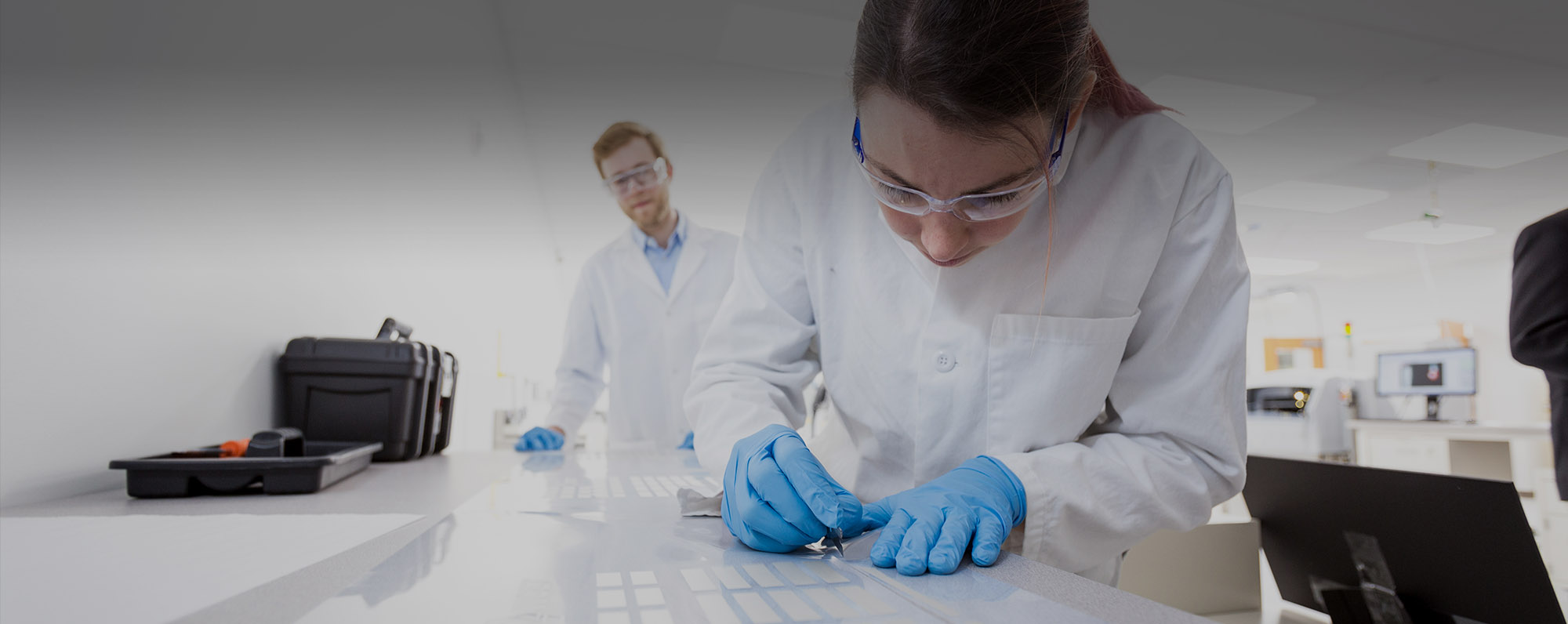A Battery from Household Chemicals
Students build and test a galvanic cell using different metals.
QUESTION
How do batteries produce electricity?
Background
We use batteries to power lots of different things, from TV remotes to computers. Some cars even run on batteries instead of gasoline! So where does all that power come from? All batteries, big and small, get their power from chemical reactions happening inside of them. When certain types of chemicals react, they give up electrons which we harness to produce electrical power. When you turn on a laptop computer, or press a button on a TV remote, you’re making chemistry happen! While the two ends of the battery are connected, and electricity is flowing, the chemicals can react until they’re all used up, and that’s when your battery stops working.
This demonstration is a fully functioning battery, which runs only on chemicals you might have in your own house. In the middle cup is magnesium metal (a fire starter for camping), surrounded by water with table salt (sodium chloride) dissolved in it. In the outer cup is hydrogen peroxide from the drugstore mixed with vinegar, a type of mild acid. The black rod is carbon, which helps to pull the electricity out. Without wires connecting the carbon and magnesium, nothing happens. But when you connect the wires, magnesium reacts and gives up electricity, which then travels through the red LED, lights it up, and moves into the carbon. There, the electricity reacts with the hydrogen peroxide and vinegar to produce water.

The anode oxidation half-reaction is 2Mg -> 2Mg+ + 2e-
The cathode reduction half-reaction is 2H2O2 + 2H+ + 2e- -> 2 H2O
Research Connection
Researches are trying to find new chemistries for batteries that use earth abundant materials, are safe and reliable, and have a high energy density. While this cell is not rechargeable or practical for use in industry, it shows how easily obtained materials could be used for battery technology.
NGSS Standards
| Standard Number | Standard text |
| HS-PS3-3.
|
Design, build, and refine a device that works within given constraints to convert one form of energy into another form of energy. |
| MS-PS1-2 | Analyze and interpret data on the properties of substances before and after the substances interact to determine if a chemical reaction has occurred. |
Grades 7-12
Time: 1 hour
Materials
- Saturated salt (NaCl) solution
- 6% acetic acid (vinegar) solution
- 3% hydrogen peroxide solution
- 1 – Magnesium metal strip
- 1 – Conductive carbon rod
- 1 – Galvanic cell cup with attached clips for metal/carbon
- 1 – microporous cup, pre-soaked in salt solution
- 1 – Small red LED (must be red, most other colors won’t work)
- 1 – Set of red/black wires with alligator clip leads
Procedure
- Unpack the supplies. Gloves are suggested but not required
- Take the microporous cup out of its salt soak and place it in the center of the galvanic cell cup. If not already full, fill the microporous cup to within 1-2 cm of its top with salt solution.
- Place the magnesium strip into the salt solution. Use one of the clips on the galvanic cell cup to secure it.
- Insert the carbon rod into the outer cup. Secure it with the other c
- Fill the outer cup to about 1/3 with vinegar.
- Continue to fill the outer cup with hydrogen peroxide until it is 2/3 full (equal volumes vinegar and hydrogen peroxide solution). Try to avoid splashing any peroxide on the magnesium.
- Attach the red wire to the clip holding the carbon rod, and the black wire to the clip holding the magnesium.
- Clip the red wire onto the LED’s positive terminal (usually longer) and the black wire onto the LED’s negative terminal. The LED should light up.
- Unclip all wires and the LED. Unclip the magnesium strip and remove it from the salt solution. Rinse it off with water, pat dry and store it in a sealed plastic bag. Unclip the carbon rod and remove it from the peroxide/vinegar solution. Rinse it off with water, pat dry, and store it in a sealed plastic bag.
- All solutions can be poured down the sink. Lightly rinse the porous cup before placing it back into its salt soaking solution. Top off the soak with enough salt solution to keep the liquid level above the top of the cup. Lightly rinse the galvanic cell cup and pat dry.
Design Questions to Explore
- Why do we need to separate the chemicals?
- Why do we need salt in the water?
- What other metals could work in this battery? Are there any other household metals you could try?
Extensions
Try building the aluminum air battery. Try building a galvanic cell that delivers a set voltage and power.
Resources
Where to get your materials
American Education Voltaic Cell with 8 Electrodes and Porous Cup
Acetic Acid (6%) – (Available in cooking supplies section grocery store as white vinegar)
Peroxide (3%) – (Hydrogen peroxide, available in first aid section of grocery store)



